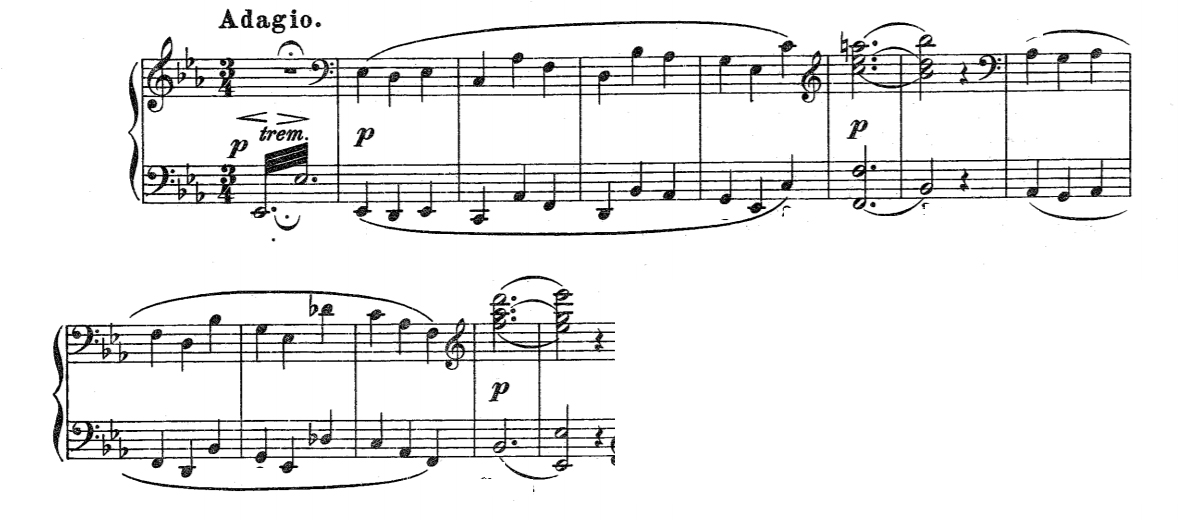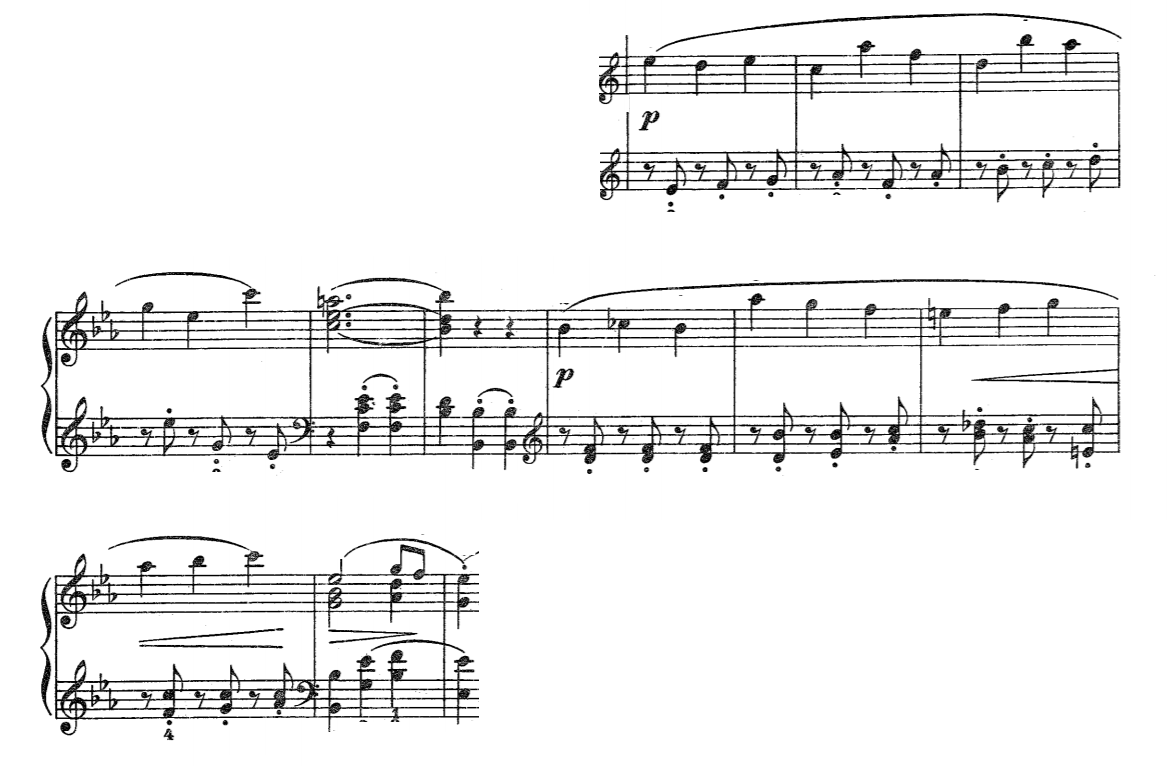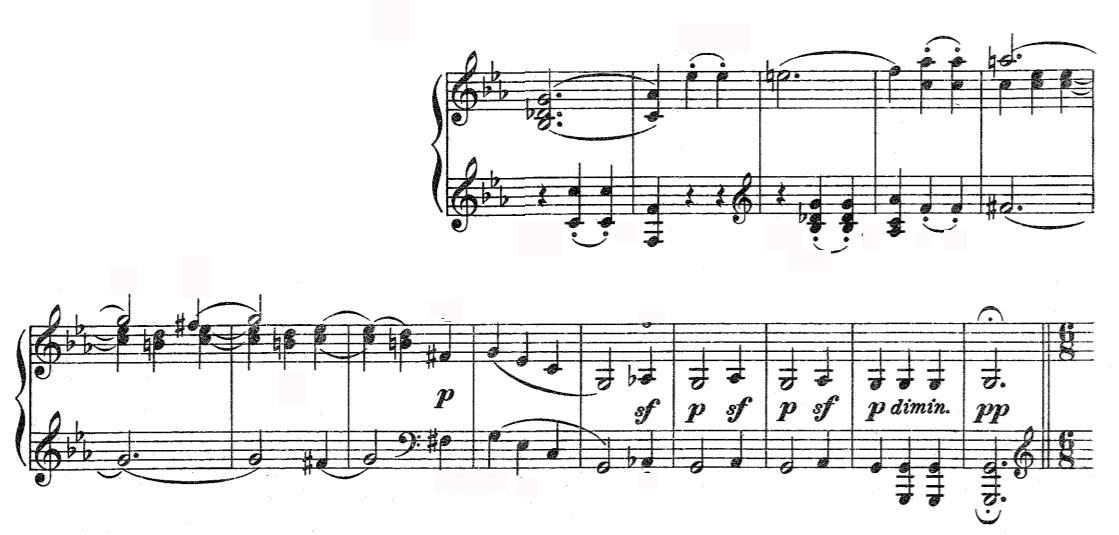The Microstructure of the Introduction
Let’s focus now on bars 1-39 – the Adagio introduction. You may find it helpful to have your score handy as you work through this section.
Studying the Microstructure
(Allow around 1 hour for this activity)
- Study bars 2-39 and try to answer the following questions:
- How many phrases are there?
- How do the cadences articulate the sub-structures?
- How is repeated thematic material differentiated?
- Are there striking examples of instrumentation for any of the themes or melodic material?
- How is the tonality of E-flat major established?
Discussion
I hope you were able to answer at least some of these questions, but here is a synopsis to help you to find the important points to consider in preparing to conduct this work. Note we have given the examples here in piano reduction to make your study easier.
The introduction I unfolds in three phases: mm. 1-13, 14-25, and 25-39.
The first phase i1 is a twelve-measure phase, prefixed by the famous drumroll. Haydn continues with another unorthodox choice in the scoring of the first phrase: cellos, string basses, and bassoons. This first phrase is further divided in two sub-phrases, the first ending with an imperfect cadence (half close) and the second with a perfect cadence in E-flat major (see Example 3.8).
The second section, i2, is the same melodic material from i1 but with textural and harmonic variations and changes of instrumentation. After the first clear affirmation of the E-flat tonality on measure 13, the theme is repeated with variation in mm. 14-25. Here, the original bass melody now appears in the treble and with an offbeat accompaniment as a striking addition (Example 3.9).
The last section, i3, is a transition, lasting fourteen measures leading us to C-minor.
While the off beats hint a clear harmonic context which the first statement does not have, the cadential points at mm. 18-19 and mm. 24-25 are harmonically the same as in mm. 6-7 and 12-13, respectively. There is however a tonicisation in F minor in measure 22 which is repeated in measure 28 as a preparation for a modulation to C minor which develops after measure 30. The introduction ends on a unison G, the dominant of the ‘supposed’ new key of C minor (Example 3.10).


